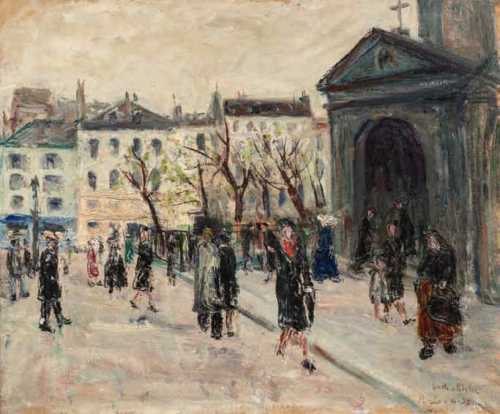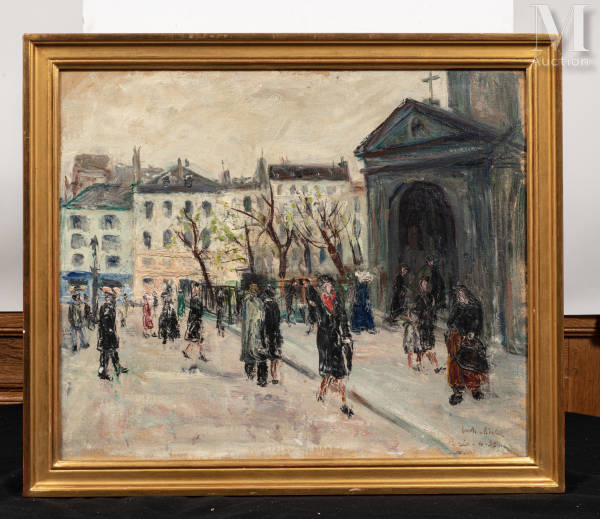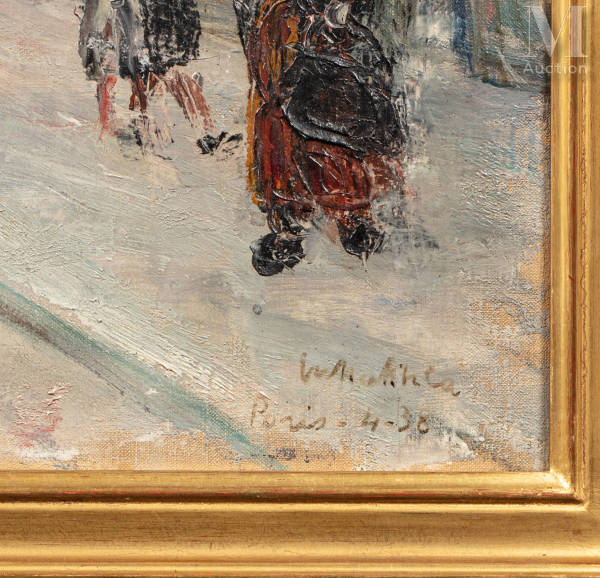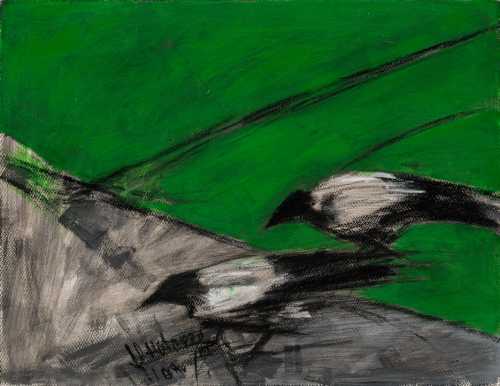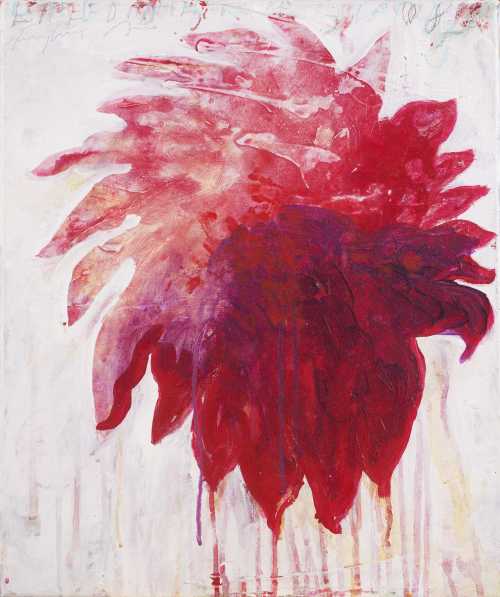- Saint Germain des Pres, Paris 1938
- Oil on canvas
- Painting
- 55 * 46 cm
- Signed and dated lower right "M Nahkhla 4 - 38"
5 July 2022
Estimation
€6,000
6,298 USD
-
€8,000
8,397 USD
Realized Price
€7,000
7,348 USD
0%
Artwork Description
On September 30, 1977, Marguerite Nakhla died in her family apartment in Alexandria. Nicknamed the "pioneer in the shadows" or "the nun of the fine arts", Nakhla is determined, forgotten by the Egyptian artistic community and has remained anonymous for decades. A remarkable artist, she left little documentation after her death and much of her work is scattered in private collections around the world. It is only recently that Nakhla has seen renewed interest and its long-awaited recognition is accelerating. It was in 2009, thirty years after the death of the artist, that with the publication of the first monograph devoted to the artist: “Marguerite Nakhla: Legacy to Modern Egyptian Arts” in Canada by the Egyptian-Canadian sociologist that the artist has returned to the forefront of her country's art scene. More recently in 2014, Ezz el-Din Naguib, a well-known Egyptian art critic, succinctly titled his essay "In Search of Marguerite" in the preface to one of the few, if not the only, Arabic-language work dedicated to in the life of the artist. Finally in 2015, two paintings by Nakhla The 14th of July (1930) and Untitled (1940) were auctioned and sold at record prices at Christies in Dubai. book in Arabic devoted to the life of the artist. Finally in 2015, two paintings by Nakhla The 14th of July (1930) and Untitled (1940) were auctioned and sold at record prices at Christies in Dubai. book in Arabic devoted to the life of the artist. Finally in 2015, two paintings by Nakhla The 14th of July (1930) and Untitled (1940) were auctioned and sold at record prices at Christies in Dubai.
Born in Alexandria in 1908, the year of the founding of the Egyptian School of Fine Arts and the Coptic Museum in Cairo, Nakhla devoted her life to art, in isolation, and interpreted Egypt in a new light. A graduate of a French-speaking school for girls run by nuns, she was one of the first Egyptian women to pursue pedagogical art studies at the Pedagogical Institute of Arts for female teachers and was relentless - throughout his life - to continue learning, studying and teaching. Thus in 1934, she was one of the first female Egyptian artists to travel to Europe to pursue university studies, first at her own expense and then thanks to a government scholarship program. Between 1934 and 1939, Nakhla studied at the
The work presented belongs to this period of the artist "Parisian life" where she painted Parisian scenes such as A Sunday in Luxembourg (1937), for which she received a prize, exhibited in the monumental Egyptian pavilion at the Universal Exhibition in Paris in 1937. The city of Asnières acquired his painting, Obélisque de la Place de la Concorde, the year it was designed in 1936.
Born in Alexandria in 1908, the year of the founding of the Egyptian School of Fine Arts and the Coptic Museum in Cairo, Nakhla devoted her life to art, in isolation, and interpreted Egypt in a new light. A graduate of a French-speaking school for girls run by nuns, she was one of the first Egyptian women to pursue pedagogical art studies at the Pedagogical Institute of Arts for female teachers and was relentless - throughout his life - to continue learning, studying and teaching. Thus in 1934, she was one of the first female Egyptian artists to travel to Europe to pursue university studies, first at her own expense and then thanks to a government scholarship program. Between 1934 and 1939, Nakhla studied at the
The work presented belongs to this period of the artist "Parisian life" where she painted Parisian scenes such as A Sunday in Luxembourg (1937), for which she received a prize, exhibited in the monumental Egyptian pavilion at the Universal Exhibition in Paris in 1937. The city of Asnières acquired his painting, Obélisque de la Place de la Concorde, the year it was designed in 1936.
More lots by Marguerite Nakhla
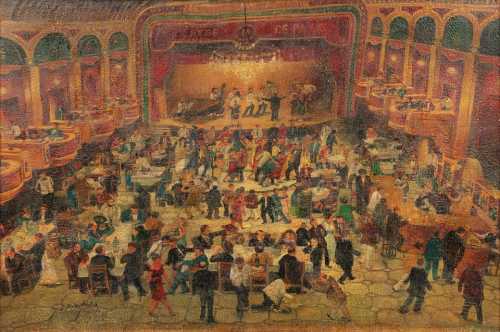
Theatre de Paris
Estimation
£80,000
103,694 USD
-
£120,000
155,541 USD
Sale Date
Bonhams
-
13 November 2024

Montmartre
Estimation
€1,800
2,093 USD
-
€2,500
2,907 USD
Sale Date
Millon & Associés
-
6 July 2025
Realized Price
7,348 USD
Min Estimate
6,298 USD
Max Estimate
8,397 USD
Average Artwork Worth
0%
Average Growth of Artwork Worth
Sales Performance Against Estimates
Similar Artworks
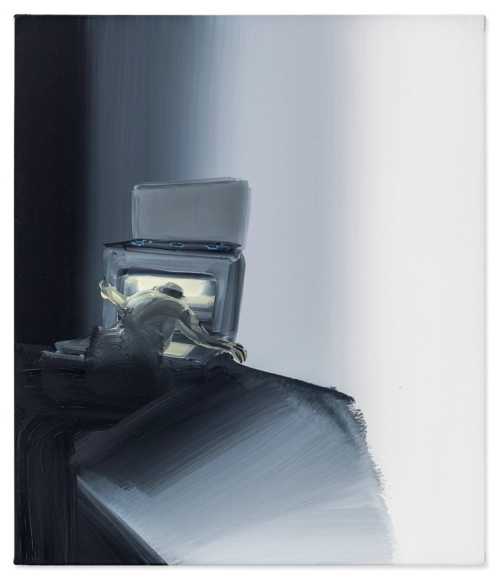
Head in the Oven
